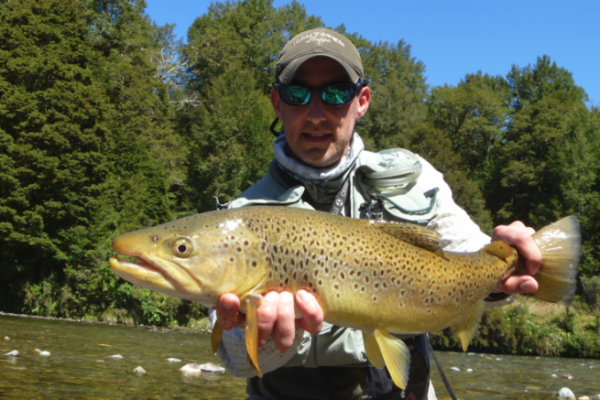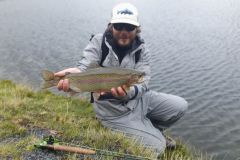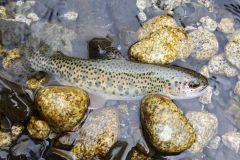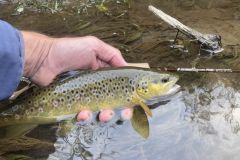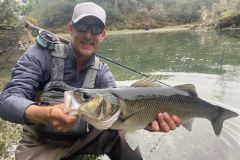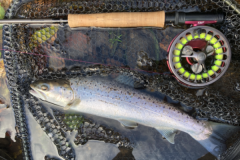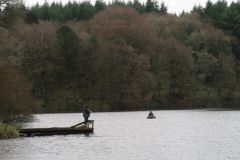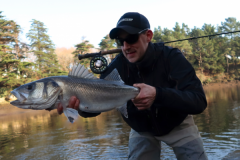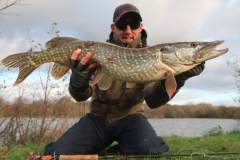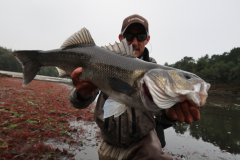Dry-nymph or tandem fishing
Many fly fishermen regularly use two-fly tying, employing a nymph under a dry fly. Most of the time, this technique is used in fast-flowing water, in mountain streams or rivers, and offers the fish two flies with two tiers. Very often, the dry fly serves as an indicator and supports the nymph, but it is possible to fish differently by adapting your fly-tying.
In "heavy" tandem or fast water, the nymph will "work" between two waters or close to the bottom, by setting the depth of the stem beforehand, and this will not vary unless the rig is reassembled to modify the length of the stem to adapt to the positions. This technique works particularly well on even bottoms, and allows you to prospect large areas quickly and efficiently and/or in poorly marked positions. The dry fly serves as an indicator, but it can also be swallowed if the fly is well chosen. This is where we can play on many factors to constantly adapt and not just use the dry fly as an indicator.
In this case, the choice of dry fly is important and must be adapted to the weight of the nymph used. Very heavy nymphs are rarely used, although some flies, notably those made of deer hair or foam, can support a certain weight. In France, "tabana" type flies are mainly used.
I've used this technique extensively in the fast-flowing rivers of the Great American West, in Patagonia, or in France in a rig, where it's terribly effective. In these regions, foam flies imitating terrestrial insects (beetles, grasshoppers, ladybugs, etc.) are often used to support nymphs of significant size and weight. I've caught some very nice trout this way, on both dry and nymph flies.
It's also a good option for early-season fishing, where the use of a fairly heavy nymph allows you to fish deeper, where the fish are.

Fishing with two light flies
Nevertheless, it is possible to fish "light" with this technique and use small nymphs, especially in summer, under a "normal" size dry fly, which is not a "cork"! Once again, this allows you to catch fish both in the dry and in the nymph when the fish aren't very active on the surface but occasionally gobble.
It is also possible to offer small nymphs with little or no ballast behind a light dry fly when fish are fussy and do not surface regularly.
This keeps the nymph at the right depth and makes it easier to see the bite.
For example, during the May fly period, when hatching is not yet well established, a lightly weighted May fly nymph under a May fly subimago can give very good results!
Alternatively, an ENT or pheasant tail nymph or an imitation whipworm larva helmeted under a sedge can also be very effective when trout are not very active on the surface.
Some days, both flies catch the same number of fish. On other days, the dry fly serves more as an indicator and/or allows you to offer a nymph and catch the majority of fish underwater.
I use both these techniques regularly and successfully in Brittany.
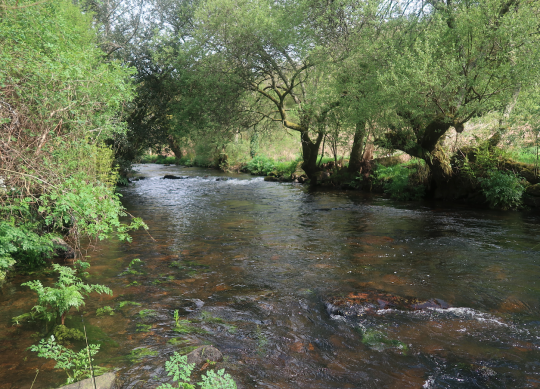
Advantages and disadvantages of tandem fishing
Benefits :
- Fish both on the surface and underwater to increase your chances of catching a fish.
- Provides fast, efficient coverage of large, evenly distributed areas.
- Ideal for beginner nymphs.
- It's fun because you can catch fish on both flies and/or on the nymph as you watch your dry fly sink, reminding us all of our early days of fly-fishing!
By adapting dry flies and nymphs, you can fish in a wide range of situations and catch more fish than if you were using a single fly.
Disadvantages :
- The nymph is always fished at the same depth using the pre-fixed stem, depending on the nymph's weight.
- Better suited to regular bottoms than areas with wide variations in depth, unless the fish are very active and come up for the nymph between two waters.
- A little heavy and sometimes difficult to cast, especially for beginners or in windy conditions.
- Less precise and less discreet than a fly.
- It's not easy to fish the edges if you're in the middle of the river. The angler's position will be important when edge fishing.
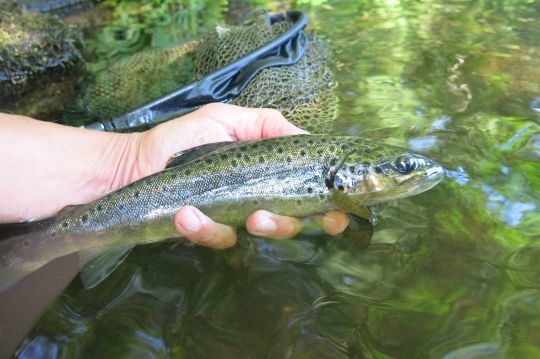
Which flies to use for this technique?
- Fast water drying : tavana, goddard caddis, large CDC, terrestrial or indicator flies
- Light" dryer: any imitation that floats high and supports small, lightly weighted nymphs: sedge, tricolore, palmer, well-stocked CDC, ORL... A parachute rig will increase the fly's visibility, especially in currents. A small tuft of yarn can also work without a parachute.
- Nymphs : all types of nymphs except very (too) heavy tungsten or double bead nymphs. I often use pheasant tail and helmeted ORL, sedge larva, olive, perdigone.
- Light fishing : lightly or lightly weighted (or not at all) helmeted nymphs, such as ORL and pheasant tail with small brass or tungsten balls of 2 mm or less, but any type of nymph can work. Sub-surface nymphs can be excellent on a very light rig.
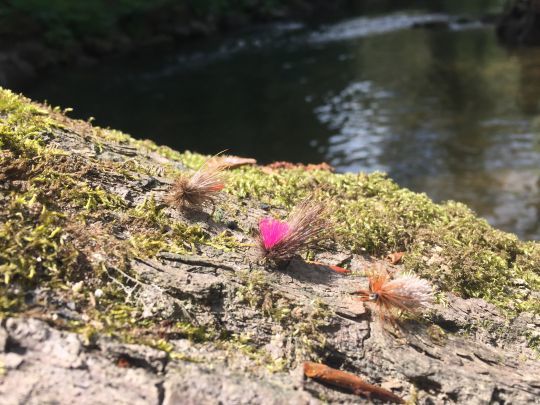
Two-fly rig
The length of the stem should be chosen according to the average depth of the fishing spot(s). This should be judicious if you're looking for fish on the nymph near the bottom. Less important if you're fishing between two waters.
In the case of lighter fishing, this length may be greater than the depth if you wish to present a nymph with little or no weight between two waters, or far behind the dry fly if the fish gobble little but catch fairly close to the surface.
I often rig the nymph using a slip-knot which I fix on the bend of the hook of the first fly (if barbed), leaving 2 mm of thread protruding, so that I can undo the loop to remove the nymph if the trout take mostly the dry! I can then put the nymph back on without retying the knot. This set-up is very practical for quick changes.
For barbless flies, you can mount the nymph's stem on the dry fly's eyelet. Ideally, if the nymph is not too heavy, the dry fly will still present itself well.
Another way to do this is to tie a stem knot (surgeon's knot). It's less discreet and often tangles up, especially when you're a beginner.

 /
/ 